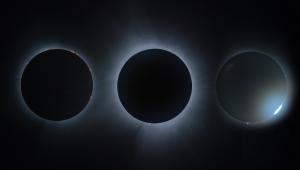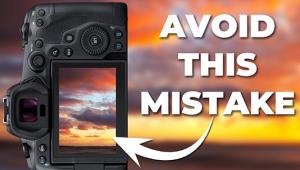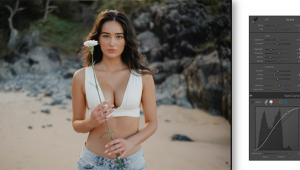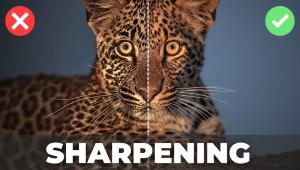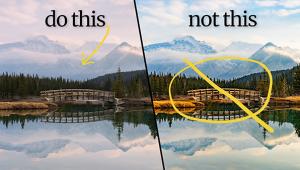Q&A Digital Photography
Help Us Out...
To aid us in making Digital Help as helpful as possible, please be specific in your query and include components, including software, that you use. David says, “Make me guess the problem and I might guess wrong.”—Editor
Standard Color Accuracy
Q. Camera reviews in “Shutterbug” give evaluations of color accuracy. Can you please explain how, if at all, those evaluations apply to Raw images? My intuition is that color accuracy may depend as much on the software used to process the image as on the Raw data that comes from the sensor.
For example, if I process the Raw image with the software provided by the manufacturer, it seems the result might be more or less accurate than if I use Adobe Raw. If that’s the case, what (if anything) does an evaluation of the camera’s color accuracy mean?
Ken Craven
via e-mail
A. From my perspective, and that of X-Rite as well, the user can profile a D-SLR so it will capture colors consistent with the ICC color standard, and many cameras can be programmed to save their Raw files in Adobe RGB profile format. So, there is a possibility to obtain relatively objective color accuracy with a D-SLR and some other digital camera models.
I agree with your assumption, and I also recommend using the camera manufacturer software provided to convert their proprietary Raw data to a standard format like TIFF or PSD. But that would presume the photographer’s computer is fully color managed, and the display included is a full Adobe RGB color range model that is accurately adjusted, calibrated, and profiled.
Image Processing Options
Q. I found great food for thought in your “Shutterbug” comments regarding Photoshop and Lightroom, as well as your comments on Alien Skin and other plug-ins. These are what I have been using. Could you offer some suggestions for alternatives?
Glen Mitchell
North Miami, FL
A. What I recommend is what I use myself, based on over 20 years of full-time experience doing digital photo image editing. And that is LaserSoft’s SilverFast HDR (Archive Suite). It supports most of the popular cameras used today, particularly Nikon and Canon. I do use Adobe’s Photoshop CS4, but just for retouching images; however, for special effects I sometimes apply onOne’s Perfect Photo Suite software, an older version. For those who don’t have or like doing advanced image editing, what I recommend is Organic Imaging 2.0. I also suggest that rather than use Aperture or Lightroom to convert D-SLR Raw files, use the camera company’s software to convert to 16-bit TIFF files for the best image quality results.
New Scanners
Q. Right now I am trying to help my best friend determine which scanner to purchase. She used my Epson Perfection V700 and is looking at purchasing the V750 model. I told her that I had read some information in your column about scanners that I thought she should review first. I tried to look it up online, but was unable to find it. She is mainly scanning old photographs—color and black and white. These scans will be used for print and videos.
Sharon Luck
BeaverDam, VA
A. Yes, the Epson Perfection V750 scanner is an excellent product, but it is expensive, at almost $800. A very good and reliable Canon CanoScan 9000F Mark II is only $185 and can do as good or better quality scans. But I strongly recommend adding LaserSoft’s SilverFast scanning software to do photo scans, and it starts at $49; so still a great savings over the Epson V750.
I would suggest Google shopping to find a good buy on the CanoScan 9000F Mark II, and you can get the LaserSoft software directly at www.silverfast.com.
Claims And Reality
Q. I recently purchased the Asus PA249Q on the strength of your review and it is fresh out of the box. It is currently on the “Adobe RGB” setting with the brightness set to “0.” I have not yet calibrated the monitor prior to getting down to “serious” photo editing.
Your review briefly mentioned the various modes the monitor can display, but did not provide any details. Asus claims that the monitor is precisely calibrated at the factory, which implies that the Adobe RGB mode would provide the same level of calibration as a good colorimeter. Do you have any thoughts about that? Did you do comparisons between the Adobe RGB mode and your calibrated settings?
You said that the monitor could be calibrated with great precision, but you did not specify the mode you used to do the calibration. I assume that it was one of the custom modes, but since you did not specify, I don’t want to jump to any conclusions.
Thanks very much for your help and for the years of service that you have provided to the photographic community.
Allen Shifrin
via e-mail
A. Thank you for your kind remarks. I only mentioned two modes for using the Asus PA249Q because the other modes do not support digital photography, and my space is limited. Asus claims, like all other consumer product claims, are not worth the salt provided to heal the wound. In other words, factory calibration simply means the chromatic range is set by an algorithm in the system that adjusts the top and bottom limits of the display’s spectrum. What is between has to be precisely measured by a colorimeter, and adjusted, calibrated, and profiled to obtain a working reproduction that is objectively accurate.
The only display mode setting I used was Adobe RGB, and then the display was adjusted, calibrated, and profiled using the hardware and software I recommended; the X-Rite i1Display Pro, including setting its media type at RG Phosphor to adjust for the LED backlight. The only other option available to users is the X-Rite i1Photo Pro color management system (very expensive, and does printer profiling).
You can save yourself from jumping to conclusions by not relying on anything a display manufacturer claims. If their claims were true they would make displays with built-in colorimeters and software, and only the very pricey Eizo ColorEdge does that, although that also requires the user to provide an approved colorimeter extra. In other words, if you don’t have one, you will need the use of at least an X-Rite i1Display Pro to adjust, calibrate, and profile the Asus PA249Q display.
Announcement
I am pleased to announce the latest 4.3 edition tomy eBook Digital Darkroom Resource Cd. The CD now contains 34 chapters totaling 399 pages in Adobe Acrobat .PDF format, providing easy-to-read text and large high-quality illustration. The CD is available for $20 plus $5 shipping and handling (US Mail if available). Ordering is as simple as sending a check or money order for $25 made out to me, David B. Brooks, and mailed to PO Box 2830, Lompoc, CA 93438.
- Log in or register to post comments













